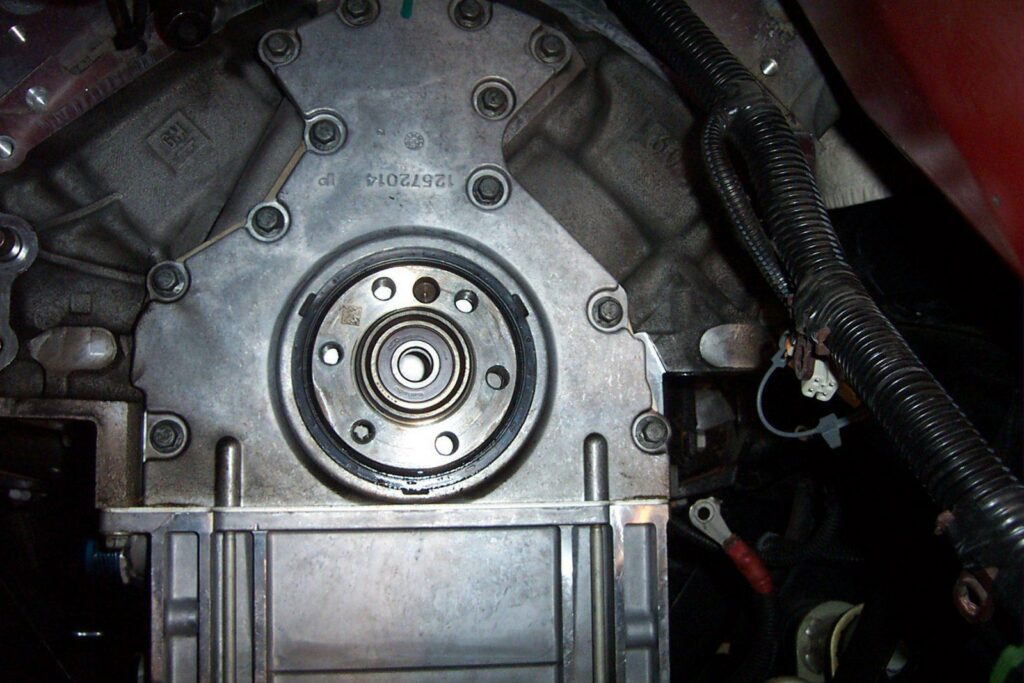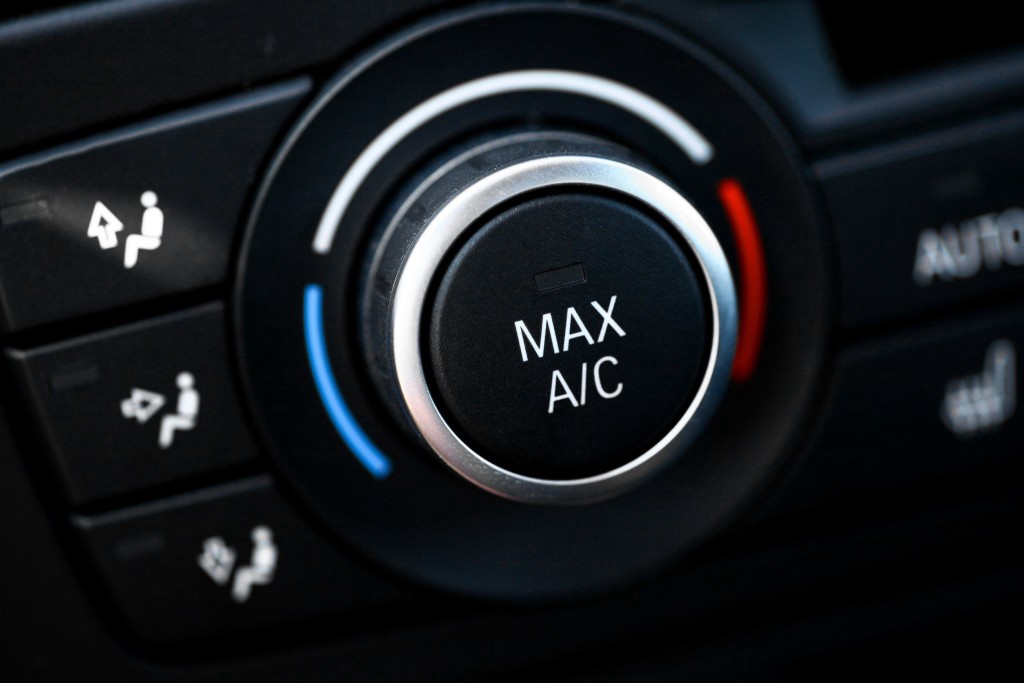
Quick thoughts of a summer day, having a long way to go but the traffic is not that “cute”, will a smile still appear on your face after miles? And miles suffering from humidity and the heat in that metal cabin without AC added in? Guess not. Then you look at the air conditioning button on your car, do you wonder “ How does an air conditioning system of a car work ”. The term “car’s air conditioning system” has been known the most since 1939, when Packard Motor invented the car A/C. It totally changed the entire automobile industry.
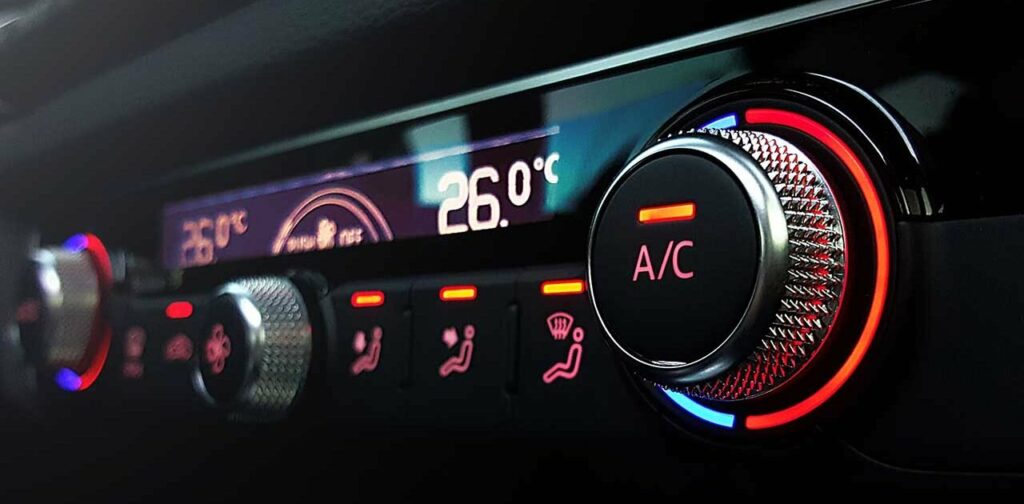
For more than 80 years, novel types of the system have been established for convenience in use due to the rise of customer needs. However, interestingly, the A/C still works in the same fundamental principle as its first proposal, ideal with 4 main parts.
They are the compressor, the condenser, the receiver drier, and the evaporator. Having a good understanding of “how a car’s air conditioning works” should probably help you to avoid being frightened of the circumstance when the hot air blows to your face in the middle of May, or to make better-informed decisions on repairing/maintaining choice.
Does The Vehicle Air Conditioning System Really Create Cool Air?
The answer is no. You may surprised but it is true that the air conditioning system of the car does not create cool air by itself. The A/C takes the heat away and moistures the available air in the car by driving a cooling material called “refrigerant” or “freon” in a closed loop. Lowering the temperature inside the passenger’s cavity by using the difference of temperature in different states throughout a series of tubes.

The Structure Of An Air Conditioning System of a Car?
Refrigerant/freon
The working fluid that is sensitive to heat possesses ideal thermodynamic characteristics (a low boiling point, a sufficient density in liquid form, and a high-density level in gaseous form). The fluid, moreover, contains a relative amount of dispersants to lubricate the whole system while processing the phase transition from liquid to gas and vice versa.
Compressor
Also known as the heart of the system, the compressor has a pulley and a clutch attached to the vehicle engine at the crankshaft. When the AC is turned on, the crankshaft will initiate the pulley to drive the pistons inside the compressor. Then it starts to compress the refrigerant.
Condenser
It is one of the most observable parts and easy to check automotive AC in modern vehicles. A small radiant-looking object is placed behind the grilles and in front of the radiator where the condensation proceeds.
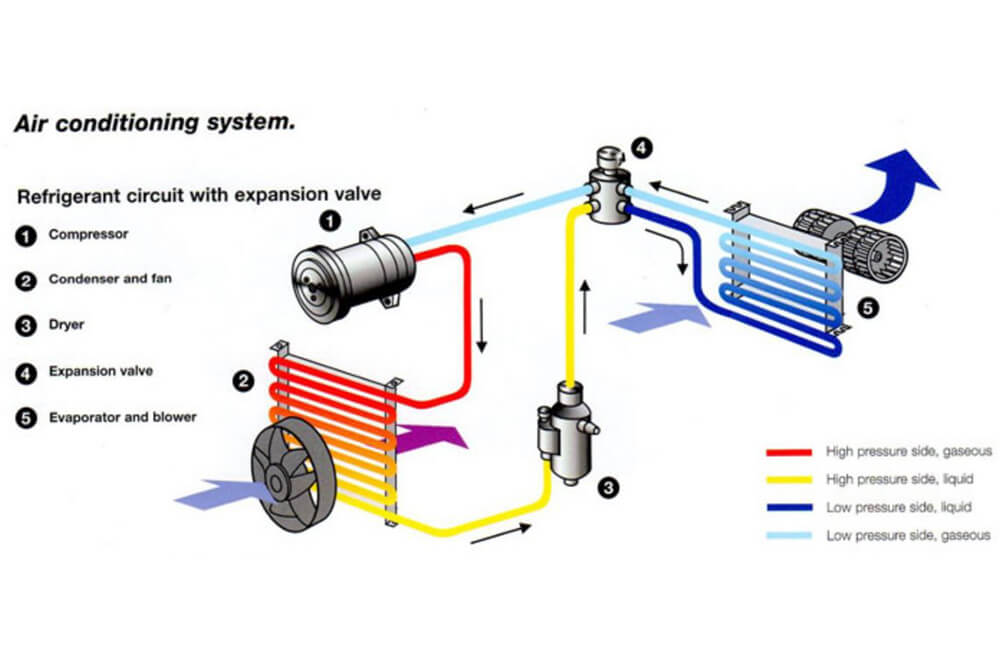
Receiver-dryer
The receiver-dryer is a lot like a cylinder reservoir for purification in order to prevent damage as a consequence of crystallization.
Expansion valve/Orifice tube
Depending on the model and the year of the car decide whether it is the expansion valve or the orifice tube built-in operation. Both of these are different in structure but share the same function as vaporizing compartments that turn liquid back into gas. Normally, an expansion valve will be linked to an evaporator to sense the temperature and the diaphragm allows the refrigerant to pass. An orifice tube, on the other hand, is just a long tube with a tiny passing head.
Evaporator
Positioning inside the passenger cabin underneath the dash, whereas other above-mentioned sections locate in the engine bay.
How Is Cool Air Created?
The evaporation liquids
Initially, the low-pressure gaseous refrigerant is compressed at the compressor into the high-pressure, causing the high temperature.
The high-temperature and pressurized gas then travels along the high-pressure tube to the condenser. At the condenser, the heat of the fluid will be absorbed into the atmosphere by convection and cooled down by the AC fan (either the radiator fan or the separated fan). According to thermodynamics, the hot gas will be condensed to the liquid state by undergoing rapid cooling.
The gas leaves the condenser in the form of liquid to the receiver-dryer. The fluid from the condenser will have to go through the 2 layers of the strainer and 1 layer of the desiccant to keep all the water and impurities floating on top. The pure refrigerant goes from the bottom of the reservoir along a tube to the expansion valve or orifice tube.
Read more:
- How To Fix Sagging Headliner Without Removing In Less Than 10 Minutes!
- Ban on Used Truck Imports Signals Boon for Assemblers
- 10 Most Expensive Cars in Kenya
The adsorption heat
Then, the expansion valve with loads of small openings will turn the heat-exchanging medium into a cold gaseous state. The transition is based on the thermal expansion process in which the high-pressure refrigerant is quickly expanded through a hole. Later it becomes less pressure and presents as gas before reaching the evaporator.
The flow of refrigerant will quickly cool down at the low-pressure side. It is said that the coolest point of the fluid is going to be at the evaporator. The AC blower fans blow the cold drier air to the seat side over the vent.
Eventually, the hot/warmer air will be absorbed back by the refrigerant to the compressor. At this stage, it once again becomes the low-pressure gas, continuing the circulation.
Watch the video below to see how does a car’s air conditioning work!
What’s More To Know?
1. Replacing the receiver-drier
Noteworthy to remember that whenever repairing/maintaining the AC system, it is crucial to replace the receiver-dryer and get rid of the old one. Why? Once the system is opened up, the exposure of the purifier to the atmospheric pressure results in a loss of its efficiency. It also leads to unwanted effects on the air quality.
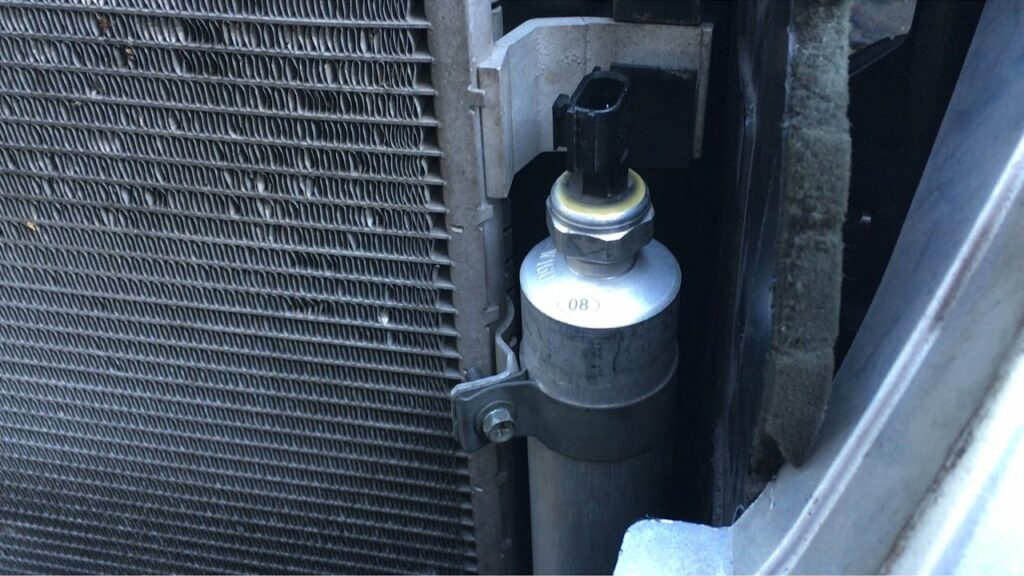
2. Choosing the refrigerant/freon
Before 1993, the former refrigerant/freon substances had been reported to have ozone-depleted effects. The Environmental Protection Agency requires all vehicles manufactured after 1994 must use the selected R134/R134a with less negative outcomes but still causing damage to the environment. R1234yf is the newest candidate for the cooling fluid playground, chosen to replace R134a by 2021 offering the capability of faster breakdown in the upper atmosphere.
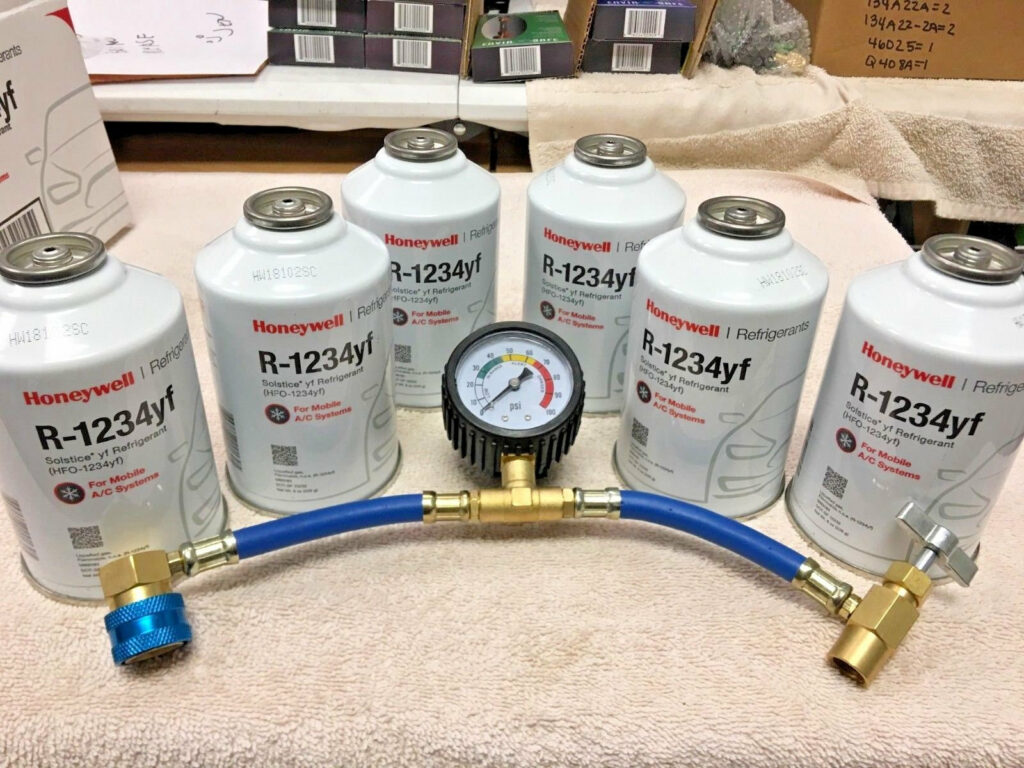
3. Troubleshooting the system
Whenever the AC system is not working efficiently, check for the proper operation of the compressor, the belt, the clutch, the fan, and the blower. Checking the flow of fluid through the low-pressure and high-pressure sides and potential leaks.
Final thought
If you have read up here, you have understood “How does an air conditioning system of a car work?”. It is interesting that the way a car’s air conditioner works is similar to the A/C at home. If you still do not understand something, do not hesitate to comment below, we will be back and explain to you. View more available used cars here.





